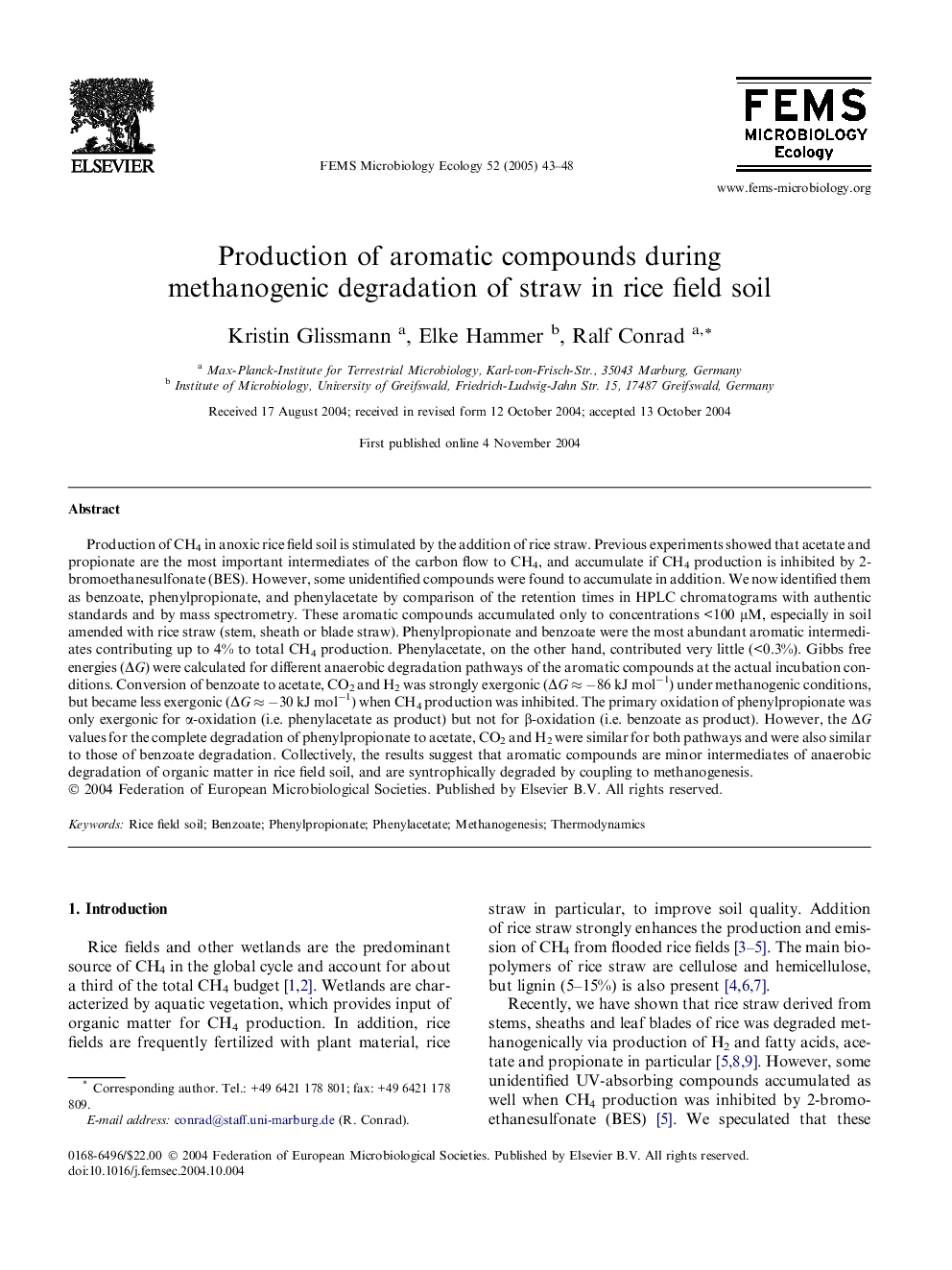| Article ID | Journal | Published Year | Pages | File Type |
|---|---|---|---|---|
| 9437752 | FEMS Microbiology Ecology | 2005 | 6 Pages |
Abstract
Production of CH4 in anoxic rice field soil is stimulated by the addition of rice straw. Previous experiments showed that acetate and propionate are the most important intermediates of the carbon flow to CH4, and accumulate if CH4 production is inhibited by 2-bromoethanesulfonate (BES). However, some unidentified compounds were found to accumulate in addition. We now identified them as benzoate, phenylpropionate, and phenylacetate by comparison of the retention times in HPLC chromatograms with authentic standards and by mass spectrometry. These aromatic compounds accumulated only to concentrations <100 μM, especially in soil amended with rice straw (stem, sheath or blade straw). Phenylpropionate and benzoate were the most abundant aromatic intermediates contributing up to 4% to total CH4 production. Phenylacetate, on the other hand, contributed very little (<0.3%). Gibbs free energies (ÎG) were calculated for different anaerobic degradation pathways of the aromatic compounds at the actual incubation conditions. Conversion of benzoate to acetate, CO2 and H2 was strongly exergonic (ÎG â â86 kJ molâ1) under methanogenic conditions, but became less exergonic (ÎG â â30 kJ molâ1) when CH4 production was inhibited. The primary oxidation of phenylpropionate was only exergonic for α-oxidation (i.e. phenylacetate as product) but not for β-oxidation (i.e. benzoate as product). However, the ÎG values for the complete degradation of phenylpropionate to acetate, CO2 and H2 were similar for both pathways and were also similar to those of benzoate degradation. Collectively, the results suggest that aromatic compounds are minor intermediates of anaerobic degradation of organic matter in rice field soil, and are syntrophically degraded by coupling to methanogenesis.
Related Topics
Life Sciences
Environmental Science
Ecology
Authors
Kristin Glissmann, Elke Hammer, Ralf Conrad,
